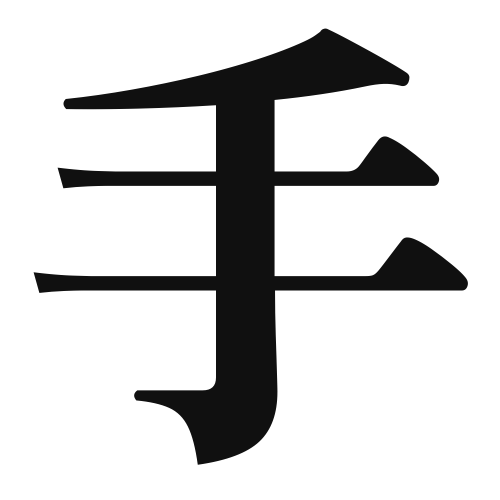1. Overview of Meaning
The kanji “手” (te) means “hand” in English. It represents not only the physical hand but also actions and skills associated with it, such as doing, making, and using.
2. Formation and Radical
Formation of the Kanji: The kanji “手” is a pictogram that visually resembles a hand. It is classified as a pictographic character because it depicts the shape of a hand.
Radical: The radical for “手” is also “手” (shuu), which is used in various kanji related to actions performed by hands.
3. Examples of Usage
Common Words and Phrases: Some frequently used words that include “手” are:
- 手紙 (tegami) – letter
- 手術 (shujutsu) – surgery
- 手伝う (tetsudau) – to help
Example Sentences in Daily Conversation:
- 手を洗ってください。 (Te o aratte kudasai.) – Please wash your hands.
- 彼は手伝ってくれました。 (Kare wa tetsudatte kuremashita.) – He helped me.
4. Synonyms and Antonyms
Similar Kanji: A similar kanji is “腕” (ude), which means “arm.” While “手” refers specifically to the hand, “腕” encompasses the entire arm, including the hand.
Opposite Kanji: An antonym could be “足” (ashi), which means “foot.” While “手” refers to the hand, “足” refers to the lower limb used for standing and walking.
5. Cultural and Historical Background
Relation to Japanese Culture: The concept of “手” is deeply embedded in Japanese culture, symbolizing craftsmanship and skill. Many traditional arts, such as calligraphy and pottery, emphasize the importance of handwork.
Proverbs and Idioms: One common saying is “手のひらを返す” (te no hira o kaesu), which means “to change one’s attitude suddenly,” reflecting the idea of how hands can change direction quickly, similar to changing one’s mind.
